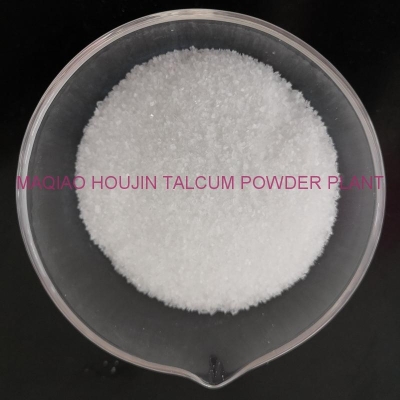-
Categories
-
Pharmaceutical Intermediates
-
Active Pharmaceutical Ingredients
-
Food Additives
- Industrial Coatings
- Agrochemicals
- Dyes and Pigments
- Surfactant
- Flavors and Fragrances
- Chemical Reagents
- Catalyst and Auxiliary
- Natural Products
- Inorganic Chemistry
-
Organic Chemistry
-
Biochemical Engineering
- Analytical Chemistry
-
Cosmetic Ingredient
- Water Treatment Chemical
-
Pharmaceutical Intermediates
Promotion
ECHEMI Mall
Wholesale
Weekly Price
Exhibition
News
-
Trade Service
According to the European Chemical Industry Council (CEFIC), only 15% of plastic waste currently collected in the EU is returned to the EU market
.
Due to lack of craftsmanship and food safety concerns, most non-PET plastic food packaging cannot be recycled for new food packaging
.
Therefore, it is often used outside of food packaging, such as construction and agriculture
.
Currently, only 10% of recycled polymers are food-grade, most of which are polyethylene terephthalate (PET) materials (Leardini et al 2021)
.
Plastic recycling takes place primarily through physical recycling: cleaned and sorted plastic waste is remelted and processed into new food packaging
.
However, during the physical recycling process, there may be risk factors for contaminated recycled raw materials to enter recycled plastics, thereby contaminating food
.
To prevent such packaging materials from entering the market, the EU and the US have enacted several laws on food contact materials (FCMs), including plastics and recycled plastics (De Tandt et al.
2021)
.
Materials and articles that come into contact with food, when made in whole or in part from recycled plastic, must undergo a safety assessment by the European Food Safety Authority (EFSA) and authorisation by the European Commission
.
rPET resin is approved by the US FDA for food contact, while China does not allow recycled plastic in food packaging
.
In addition to the mainstream food-grade recycled PET currently on the market, a small amount of rPP regenerated by chemical recycling processes (Packaging Europe 2021, SABIC 2020) is also entering the European market
.
In the United States, the U.
S.
Food and Drug Administration (FDA) has also approved recycled HDPE for food contact on a case-by-case basis for more than 20 years (Custom-Pack 2018)
.
Likewise, in the UK, HDPE recovered from milk bottles can also be used to produce new milk bottles (Ellis 2019)
.
01
01Recycled polypropylene for food packaging
Recycled polypropylene for food packagingSwiss dairy company Emmi is working with Borealis and Greiner Packaging to produce Emmi coffee cups made from chemically recycled polypropylene
.
The recycled polypropylene technology is still in its infancy, so the output of chemically recycled polypropylene is limited
.
Emmi obtained a portion of recycled polypropylene through an early agreement with the development company
.
In the future, depending on the production of suitable materials, the recycled plastic content in Emmi's latte cups will increase further
.
The chemically recycled materials used in the Emmi Latte Cups are fully compliant with ISCC (International Sustainability and Carbon Certification) standards on a mass balance basis and can be used as food contact as the recycled polypropylene is regenerated from a chemical recycling process material
.
A similarly structured partnership between Mars Foods and Saudi Basic Industries Corporation (SABIC) provides chemically recycled recycled polypropylene for Mars' pet food packaging, with the PP film structure provided by Huhtamaki Pura
.
Currently, multi-layer food packaging made of different plastic polymers or combinations of different materials is rarely recycled because the layers are difficult to separate
.
As for paper-based composite packaging, only the cardboard portion can be recycled in existing recycling processes, but the recycled paper fibers are not allowed to come into contact with food according to regulations (Geuke 2021)
.
Recycled cardboard coated with a proven barrier material (Virtanen 2022) can be used for food packaging
.
Currently, new lamination processes for plastics and foils in cardboard and paper food packaging, as well as chemical recycling processes for mixed plastics, are being developed
.
In this way, chemically recovered polymers can be used as food contact materials when the material is fully depolymerized (European Commission 2021)
.
02
02Sorting and recycling of post-consumer packaging
Sorting and recycling of post-consumer packagingUsed packaging, usually contaminated waste, contains different types
.
It includes a variety of material types (such as multi-layer packaging, blends, and composites) that vary widely in shape, color, and size
.
To ensure consistent quality, recycling centers set quality standards for their raw materials and are often equipped with sorting lines to sort out impurities from waste raw materials
.
With the development of digitization and automation, sorting technology has made significant progress in the past decade, its identification ability and sorting speed have increased
.
With changes in packaging design (such as adding optical tracking marks, avoiding multiple materials and dark materials) and the application of new sensors, automated sorting lines can better differentiate between different polymers
.
Currently, sorting is usually done using near-infrared (NIR) technology, but new technological innovations, such as hyperspectral cameras, can identify and sort plastics of various colors
.
In packaging design, digital watermarking is developing rapidly
.
The HolyGrail 2.
0 project is a well-known development that has entered the demonstration phase at a material recycling facility in Copenhagen, Denmark
.
Watermarks overlaid on the surface of consumer product packaging contain a variety of information, such as packaging type, material and purpose
.
The digital watermark can be decoded by scanning post-consumer packaging with high-resolution cameras on the sorting line (Staub 2021)
.
Digimarc's Digital Watermarking Technology
Digimarc's Digital Watermarking TechnologyIn recent years, with the increasing impact of waste plastics on the environment, people realize that the sustainability of plastic packaging is becoming more and more important.
Recyclable, reusable, PCR and other sustainable development have become the innovative direction of packaging manufacturers
.







